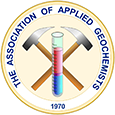ARTHUR YOUNG SMITH JR. (1929-2020)
Arthur Young Smith Jr. (1929-2020)
Arthur Young Smith, Jr., age 90, passed away on Sunday, August 23, 2020, in Knowlton, Québec, Canada. He was born in Detroit, Michigan, USA and graduated from McGill University in 1957 with a Bachelor of Science (Honours) in Geology and received his Master of Science (Honours) in Geology from Queen's University in 1961. He completed course work for his PhD at Carleton University but started working before he could complete all the PhD requirements.
Art's career was as varied as the places it took him. Coming from an old Ottawa family that was artistic, Art started out as an assistant in the famous Ottawa studio of the photographer Malak Karsh and became an adept photographer in his own right. When the opportunity arose to put his photographic skills to work with the Geological Survey of Canada, Art seized the adventure of doing airborne photo and magnetic surveys in northern Alberta, the Northwest Territories and Yukon, often flying in the belly of old war-time Lancaster bombers and the Canso flying boat, operating the cameras and magnetometers. His photos of Fort McMurray in the early fifties, capturing Fort Mac before the oil boom, are in the archives of the city.
He quickly fell in love with the opportunities that geology, geological surveying, and geochemistry gave him for understanding the world at scales ranging from the continental to the elemental. Early in his career, he and the family spent summers in Bathurst, New Brunswick, Elliot Lake and Bancroft, Ontario, working on gold and uranium deposits, and doing groundwater surveys. His early survey work helped him develop some of the early radon detection equipment that came into commercial use. His work as a geologist and geochemist for the Geological Survey of Canada (GSC) and the International Atomic Energy Agency (IAEA) took him from Canada's Arctic, Subarctic, and Maritime provinces to Uganda, Greece, Peru, Morocco, Honduras, Chile, Pakistan, Fiji, Jamaica, Sri Lanka, and Niue – doing original fieldwork and training researchers on four continents in methods that he and his teams developed for uranium exploration and mapping.
A proud moment at the end of his work in Greece was the invitation to brief the Greek Prime Minister Constantine Karamanlis on the geology of North Greece. Upon completion of the Moroccan project he moved to IAEA headquarters in Vienna, Austria where he worked in the Division of Nuclear Fuel Cycle and Waste Technology until his retirement in 1989. In April 1986, during the Chernobyl accident, he was a member of the team that advised the IAEA on natural background radiation. After retirement, as a former member of the IAEA, he shared in the 2005 Nobel Peace Prize, which was awarded 'for their efforts to prevent nuclear energy from being used for military purposes and to ensure that nuclear energy for peaceful purposes is used in the safest possible way'. He was immensely proud of receiving the Nobel Peace Prize because he had been a lifelong proponent of the safe, non-military use of nuclear energy the result of seeing the Nagasaki and Hiroshima bombings and their effects as a young man.
Art was a lifelong member of the Prospectors and Developers (PDAC), the Society of Economic Geologists (SEG), and the Canadian Institute of Mining and Metallurgy (CIM). He was also a member of the Professional Engineers of Ontario, being granted a P.Eng. in July 1970 when geochemistry was admitted as an Engineering discipline.
He was the author or co-author of forty-six publications issued by the Geological Survey of Canada, the IAEA, and various journals on topics in mineral exploration, uranium and radon methods, technical reports in uranium exploration and development. He was also the editor of various IAEA publications on uranium geology, geochemistry, Gamma-ray spectrometry and uranium exploration policy. Through his work, Art and his family lived in Canada, Uganda, Greece, Peru, Morocco, and Austria. In 1989, he retired from the IAEA and moved full-time to his farm in Fulford, Québec, where he operated a woodlot and lived until a month before his death. He was a member of the Environmental Advisory Committee for the Town of Brome Lake and of Renaissance Lac Brome for many years.
He was a devotee of classical music, opera, jazz, and most other forms of music, a gifted storyteller, a voracious reader, and a proud Canadian, fascinated with Canada's history and contemporary politics. Always a bon vivant his taste in wine was exceptionally broad, but Scotch was his drink of choice. He was blessed with an international network of friends, developed through his professional life and personal contacts, with whom he stayed in contact throughout his long life and whose careers and adventures gave him great pleasure.
